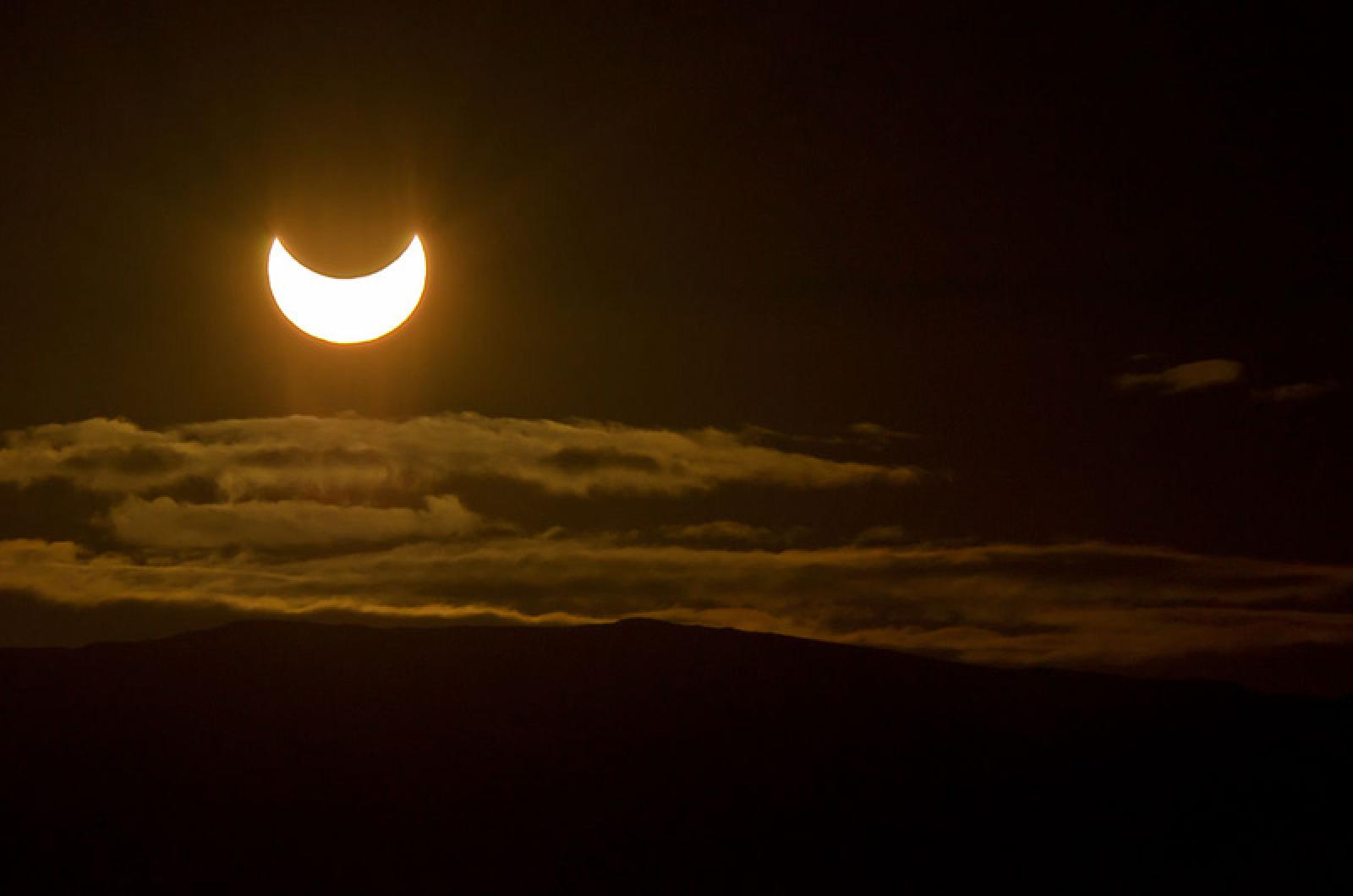On the afternoon of August 21, there will be a total solar eclipse and it will be watched by tens of millions of people across the United States. Many will see it in all of its glory while standing on a long narrow band of land stretching from South Carolina to Oregon. We on Martha’s Vineyard will only get a piece, experiencing a partial solar eclipse. The first order of business that goes with watching an eclipse is safety. Looking directly at the sun is harmful, even with a make-shift filter, and can cause blindness.
The easiest way to safely observe a solar eclipse is through projection. Put a pinhole in a sheet of cardboard and try and project the image of the sun onto a shaded white paper. If that white piece of paper is in a darkly shaded area, you’ll get a clear small image of the sun. This by far is the safest and most popular measure. Fabricating filters and engaging in the use of a camera or a telescope of any size is just too dangerous to introduce here.
A total solar eclipse is a once-in-a-lifetime event and amateur and professional astronomers travel the world to experience them, one after another. These spirited enthusiasts go from continent to continent at all times during the year. They climb tall mountains and take cruises to nowhere. To many it is their Super Bowl or World Series; seeing just one is not enough.
On Martha’s Vineyard, we’ve seen partial solar eclipses before. There was one on May 10, 1994 and one on May 30, 1984. The 1984 show was close for us, with all but eight per cent of the sun being covered by the moon. The event was reported in the Gazette on June 1: “Shortly after 1 p.m., the sky over the Island became a dark and eerie blue, with puffy gray clouds scudding on a brisk southeast breeze . . . birds saw it differently and began to sing their song of eventide.”
There was another partial solar eclipse for the Vineyard reported in the March 13, 1970 Gazette. The event was a total eclipse but you had to be a couple miles south of Nantucket to see it in totality. Gazette writer Colbert Smith began his story saying that when darkness arrived: “The light paled down to the level of dusk, for the automated street lights in Vineyard towns came on, but the light did not have the quality of dusk that conveys the imminence of night.”
Solar eclipses are predictable, but these events are also bound to one single truth: location. You have to be at a certain point on our Earth, at a date and time to experience it. Plus, the sky has to be clear.
I have a memory of my father, John S. Lovewell, taking me in his old car, along with my siblings, on a long drive to see an eclipse. It was on May 20, 1963. I was 10 years old and I can’t remember where in Maine we went. All I remember is that we missed seeing the eclipse because it was foggy.
Dad is now 96 but he can still remember vividly making a trek to Cape Cod with his Edgartown relatives for the August 31, 1932 eclipse. There were clear skies then. With him were cousins Virginia and Julien Weston and his aunt Edna Weston, all summer residents of Edgartown. That eclipse was the lead story in the Gazette of Sept. 1, 1932: “...there were many thousands left on the Island who drove to the hilltops armed with all sorts of paraphernalia with which to gaze at the dwindling face of the sun. In Edgartown some of the old-time widow’s walks and cupolas were used as observatories by householders and their guests.”
For us on the Island, the August 21 eclipse will not be as dramatic as it will be for our friends in the middle of the country, nor as beautiful as what my father remembers in 1932. And yet we can expect all but 25 per cent of the sun to be covered by the passing moon. The show begins for us around 1 p.m., reaches its peak period of totality at 2:20 p.m. and ends more than an hour later. But you could still miss it. The light around us will darken, but not by much. It may resemble nothing more than an oddly cloudy day.
But even though the Island may not be the best place to see the solar eclipse, we can be happy in the knowledge that for viewing the night sky it can rival the best observing posts in the country. On clear nights, observers can feel as if they can reach out and touch the stars. That is often how I feel when I’ve had a great night here.
So celebrate the solar eclipse in the coming week by going outside at night and looking up. Watch the sky before and during dawn. Watch the sky at the end of the day, long after a sunset. Either way it invokes a feeling in me that we are not just visitors wandering the earth in search of understanding. Our eyes are open, witnessing and taking part in the great universe.







Comments (3)
Comments
Comment policy »